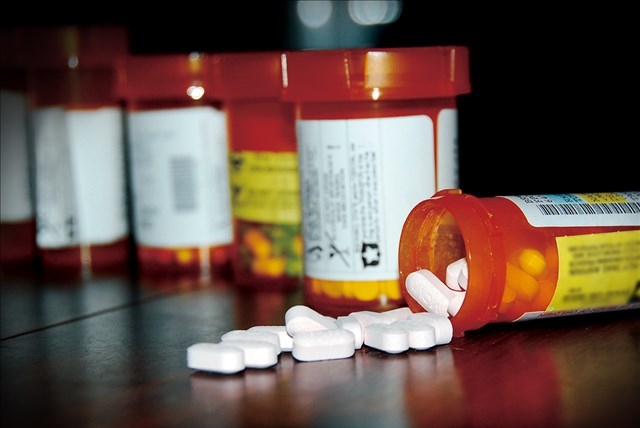
Fort Myers activist reacts to shutdown of government reproductive rights website
The website ReproductiveRights.gov, which offered resources on abortion and reproductive rights, is no longer accessible.

There are more than 2.3 million prescription drug dispensing errors made every year in pharmacies across the United States.
PHARMACY DISPENSING ERRORS
Lake Towakoni resident Linda Lilley thought she was taking her pain medication Gabapentin, but she says her bottle contained Gemfibrozil- a cholesterol medication which looked very similar to Gabapentin.
The bottle had a correct manufacturer label but she says the pharmacist put the wrong label on it.
She got so sick she says she eventually could not move. She needed help doing day-to-day chores.
“I felt nauseated,” she said. “By the third day, I was debilitated.”
The pills looked so similar that Lilley did not suspect anything was wrong. Finally, one morning, she looked at the bottle closely and discovered the mistake. She immediately stopped taking the medication; however, by that time, she had taken the wrong drug for 12 days, three times a day.
EFFECTS OF MEDICATION MISTAKES
Since 2016, the State of Texas has disciplined nearly 200 pharmacists for making errors. Documents obtained show some striking examples of dispensing mistakes.
A wrong dose of medication sent a 3-month-old to ICU for five days. The infant was given 100 times the prescribed amount.
Another example indicated a wrong strength of a drug rushed a 7-year-old to the emergency room with heart problems.
A wrong drug left another patient with an increased risk of cancer.
A patient was prescribed “cyclosporine” but instead, the pharmacist filled “Cyclophosphamide.”
WHAT IS GOING ON?
The similarity in names is one of the biggest causes for confusion, experts say.
Dr. Marv Shepard, the former Chairman of the Pharmacy Administration Division of the College of Pharmacy at the University of Texas in Austin, says errors typically occur because pharmacists are overworked.
“They’re having trouble because of the pressures of the environment,” he said. Dr. Shepherd says the stress of staying open 24 hours can be overwhelming.
He says the typical pharmacy stocks up to 5,000 drugs, dispenses 300 prescriptions daily, and makes two to four mistakes every day.
Dr. Shepard believes it results in about 100,000 deaths in the U.S. “It’s huge, it’s a big problem,” he added.
He says the two most common drugs involved in dispensing errors are insulin and anti-coagulants. And most of these occur in just about every well-known pharmacy you can think of. CBS reached out to some of the pharmacies listed in disciplinary actions by the State of Texas.
CVS PHARMACY STATEMENT
The health and well-being of our patients is our number one priority and we have comprehensive policies and procedures in place to ensure prescription safety. We regularly seek out new technology and innovations to improve our systems, we engage with industry experts for independent evaluations of our dispensing procedures, and we are committed to continually improving our processes to help ensure that prescriptions are dispensed safely and accurately. Prescription errors are a very rare occurrence, but if one does happen, we do everything we can to learn from it in order to continuously improve quality and patient safety.
WALGREENS PHARMACY STATEMENT
The quality and safety of our pharmacy services is the top priority for Walgreens, and we take any prescription error very seriously. That’s one reason we have a multi-step prescription filling process with numerous safety checks in the process to minimize the chance of human error. We also encourage patients to check with our pharmacists or their health care providers if they have a question or concern about their medications. Together, we can help ensure our patients get the best care.
BROOKSHIRE GROCERY COMPANY STATEMENT
Our company has been committed to service excellence throughout our 90-year history, and the health, well-being and safety of our customers and pharmacy patients is a top priority. We have a multi-step prescription-filling process that has stringent safeguards in place to help ensure accuracy. In the event that an error does occur, we have a quality assurance panel in place to investigate and determine cause so that we can take the necessary actions to prevent a repeat occurrence. We take this type of incident very seriously and implement precautions to prevent them from happening.
WALMART STATEMENT
We work hard every day to ensure we live up to the high standards we set for ourselves and that our customers expect. We have quality control measures in place to help ensure that any medications we provide our customers are the medications prescribed.
KROGER STATEMENT
Patient safety is a core value for our pharmacies. We require every associate working in the pharmacy to participate in safety training and quality assurance meetings. We continually review feedback and evaluate potential technology solutions and process improvements that can enhance our commitment to this core value.
TOM THUMB STATEMENT
Albertsons and Tom Thumb pharmacists have a history of providing knowledgeable, exemplary care to our customers, whose health, well-being and safety is our primary concern. We have robust training and Quality Assurance programs to ensure continuous improvement in our dispensing accuracy. Our systems and workflow process require accuracy verification and product validation throughout the filling and dispensing processes including data entry, product verification, and in the final dispensing of the prescription to the patient.
HEB STATEMENT
At H-E-B there is nothing more important to us than our communities and the people we serve. We take our responsibility as a health care provider very seriously to accurately and safely dispense and deliver medication to our customers as well as educate them on their disease state and the appropriate use of their medications. Patient safety is our number one focus and concern. We have numerous checks and balances within our system to prevent errors and we constantly add new technology and processes to ensure our patients receive exactly what is intended.
Despite the stacks of disciplinary actions received from the state, Dr. Shepherd says most errors are never reported.
MANUFACTURER’S MISTAKE
It is not just pharmacies making mistakes. While it is rare, drug manufacturers have also put the wrong medicine in a sealed bottle and then sent the bottle to pharmacies.
That is exactly what happened to Karin Bollinger.
For 30 days, Bollinger, a Dallas resident, thought she was taking Clopidogrel, her prescribed blood thinner. But instead, the bottle contained Simvastatin, a cholesterol drug. She too, suffered serious side effects.
”I had lost about 17 pounds in 12 days,” she said. “I had a horrible rash, blisters and ulcerations across my chest.”
Bollinger eventually received a recall letter from the maker warning her about the mix-up in the manufacturing process, but that was months later.
“The drug mistake had been made,” Bollinger said.
The manufacturer, International Labs, did not want to comment on the case.
WHAT IS BEING DONE
Experts say the industry is cracking down on errors at the manufacturer and pharmacy level. The FDA has created a commission to change the names of similar sounding drugs. Electronic prescriptions have helped with handwriting mishaps. In addition, bar code technology has also helped lower dispensing errors.
Both Bollinger and Lilley say their experiences have taught them to always double check their prescriptions.
“We all need to be aware of it. Look at your medications,” Lilley said. That is the only way to stay safe she added.
“This has taught me to check every one of my medications,” Bollinger said.
WHAT CAN YOU DO?
When you leave the pharmacy and tear the insert off the bag containing your medicine, make sure you check the description of the drug on the insert and compare it to what is in the bottle.
Online sites can also help you determine what your medicine should look like and if you have the right pill: